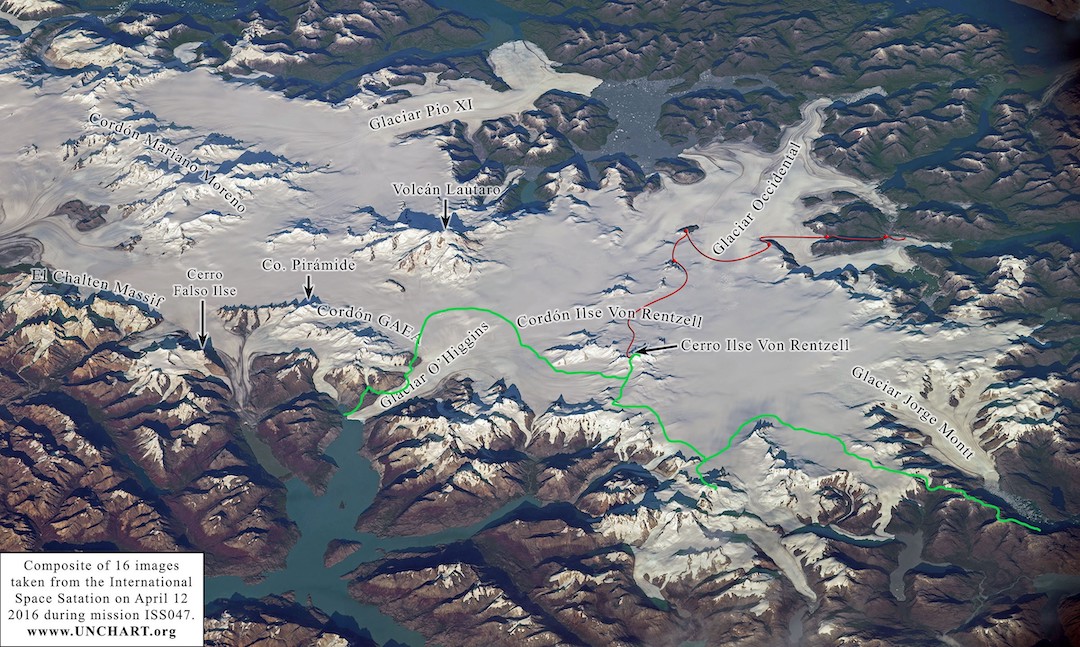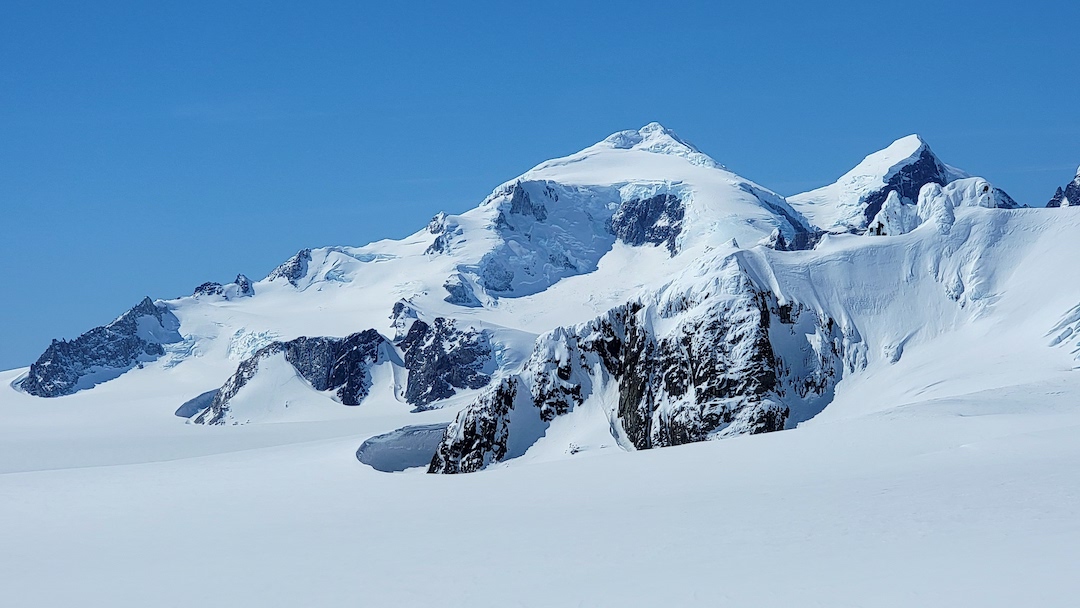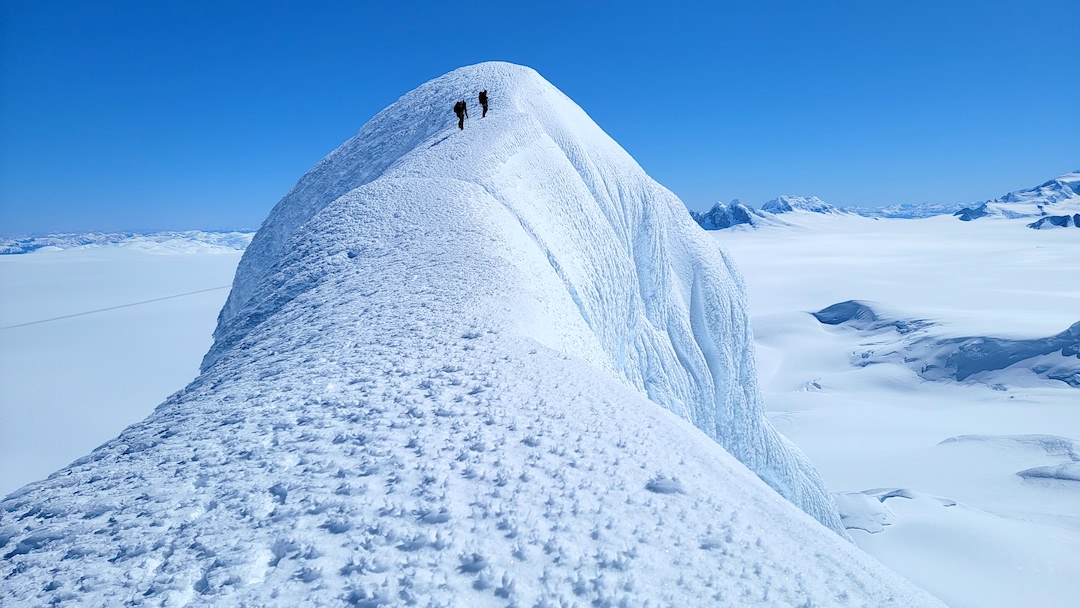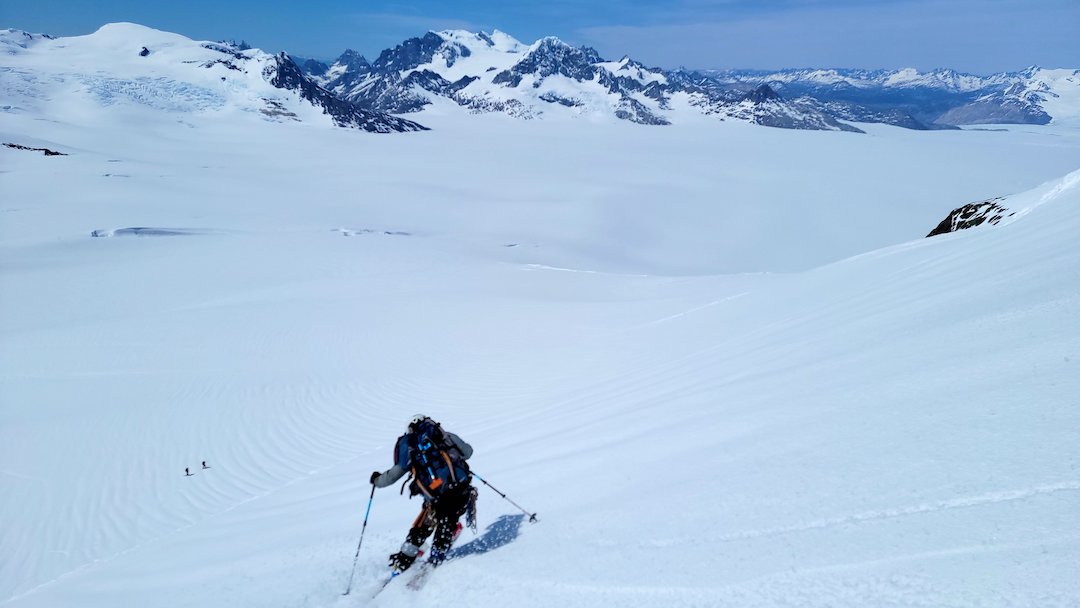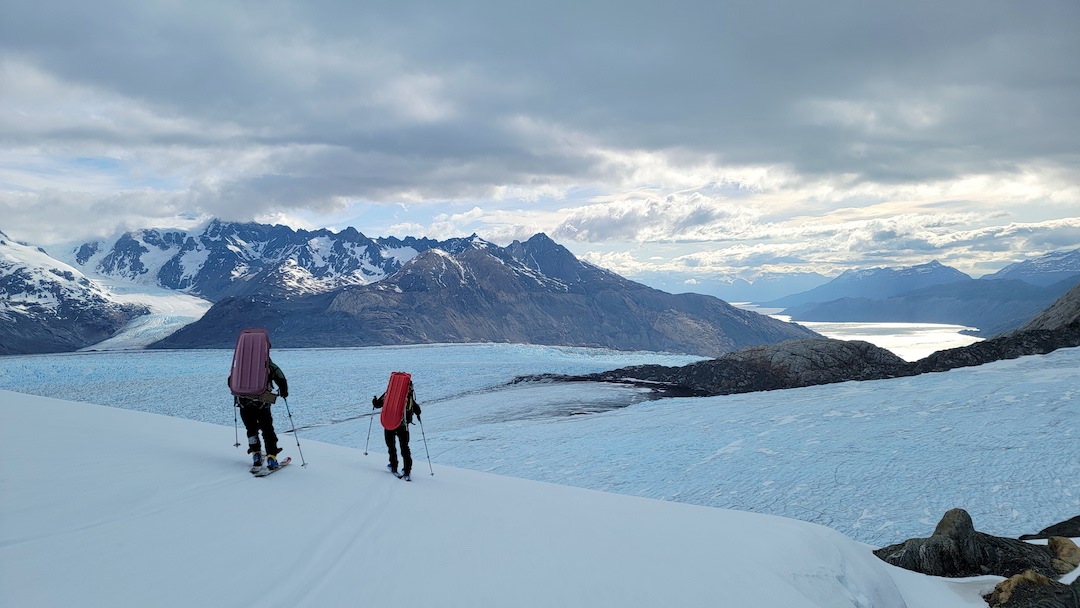Cerro Celador, South Face; Cerro Ilse Von Rentzell, East Face, First Ski Descent
Chile, Southern Patagonian Icefield
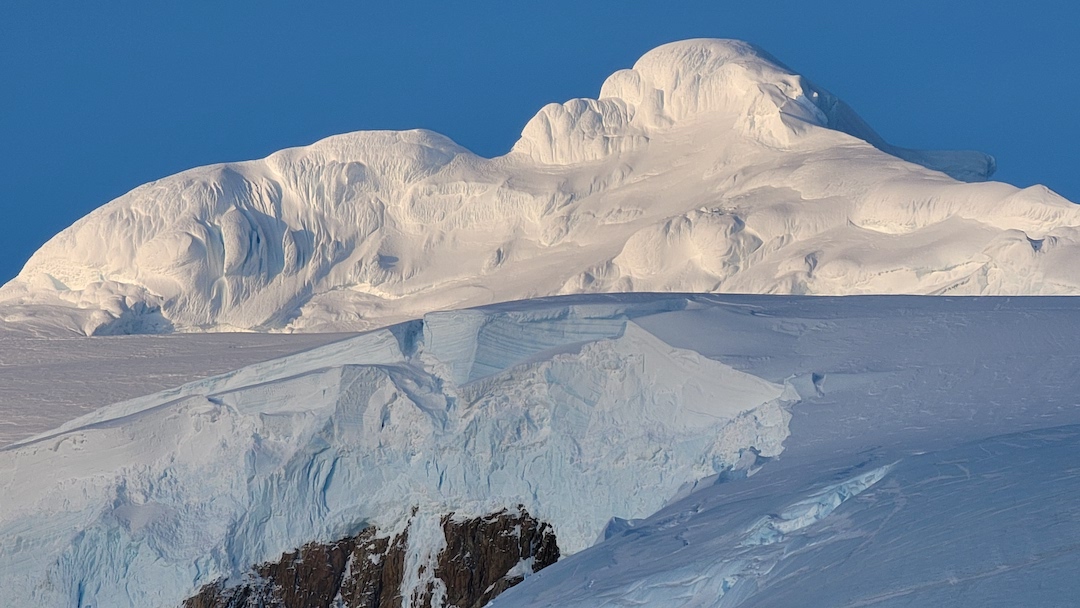
On October 29, Cedric Babec, Andres Bosch, Bernabe Lopez, and I left Caleta Tortel on a glacier sightseeing boat and were dropped off 45km south at the toe of Glaciar Jorge Montt with two weeks worth of food, approximately 40kg of gear per person, and a rough plan to cross the northern sector of the Southern Patagonian Icefield (Campo de Hielo Sur) from north to south. Hopefully, we would climb a few peaks along the way.
After carrying two loads to the ridge atop the glacier’s east flank, we wrestled our sleds up and over a number of hills before finally gaining the icefield on the third day. For those of us who had never skied with a sled before, side-hilling and descending over avalanche debris offered quite the introduction.
Two days of navigating via GPS, one in a total whiteout, led us to what we hoped was the arena of peaks situated at the northeast corner of the icefield. Snow turned to rain as we set camp, soaking most of our gear. Exhausted after three long days, we tucked into our tents, hoping to dry pants, gloves, and jackets in time for a good weather forecast the next morning.
We set off on November 2 without a cloud in the sky. A spectacular unclimbed peak, Cerro Celador (3,067m, 48°31’42”S, 73°13’47”W), rose more than 1,000m above our camp. A ramp led up the south face to the right of a hanging glacier, and we were able to cross the bergschrund on its left side. The previous night’s wind and rain left what would otherwise be a perfect pitch for skiing too icy, and we left our skis above the bergschrund at the end of an icy traverse.
Low-angle terrain above led to the base of what appeared to be an unclimbable summit mushroom. However, traversing around to the northwest side, we were able to climb unroped up a short ice step, making us the first to stand on the summit of Cerro Celador. The perfect weather permitted views to the south of Cerro Chaltén, Cerro Torre, and Volcán Lautaro as well as Monte San Valentín, Cerro Arenales, and Cerro San Lorenzo to the north. We descended on foot to where we had stashed our skis and were able to ski beautiful spring snow from above the bergschrund right back into camp.
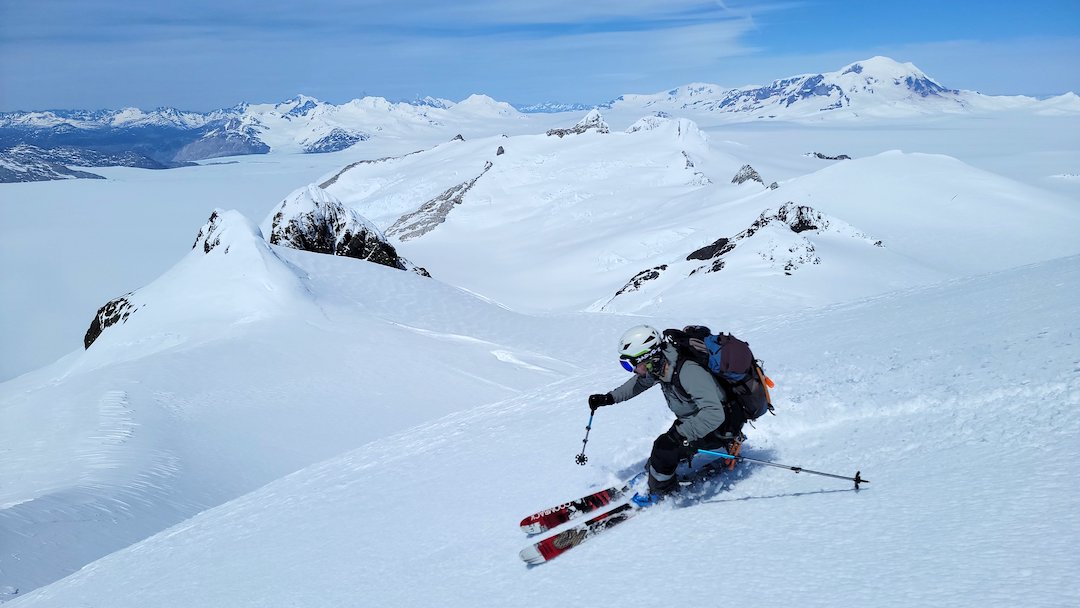
The next day was sunny, hot, and windless, and we set out to move camp 22km to the southwest to the base of Cerro Isle von Rentzell. [Cerro Ilse Von Rentzell (2,506m, 48°43’50”S, 73°25’17”W) was first climbed in 2021 by Natalia Martínez and Camilo Rada by its south face (AAJ 2022).] Unfortunately, due to some indecision in route-finding, this added up to more like a 30km day with some unnecessary elevation gain, but at the end of the day we were in a very favorable position at the base of a beautiful peak. On November 4, we made the second ascent (via the east face) and the first ski descent, skiing from the base of the southern (lower) summit mushroom on wind-sculpted chicken heads that quickly gave way to perfect corn, more or less descending our line of ascent.
Following our mantra of “the rest days are the days we climb mountains,” as these ended up being by far the shortest and easiest days of the expedition, we relaxed in camp that afternoon and got ready for the 30km-plus day to reach the DGA shelters at the top of Glaciar O’Higgins. We had not heard from the boat crew that was to pick us up at the toe of the glacier, but we had enough food to sit at the pickup point if need be.
On November 6, the descent of Glaciar O’Higgins felt interminable, with crevasse jumping and, eventually, rappelling from the glacier to reach dry ground. In all, our traverse covered about 150km with 6,000m of total elevation gain. After negotiating spicy Patagonian boat politics at Lago O’Higgins, we boarded a different boat on the morning of November 7; our new captain delivered us safely to cold beer and hot food.
— Mike Dahlquist, USA


